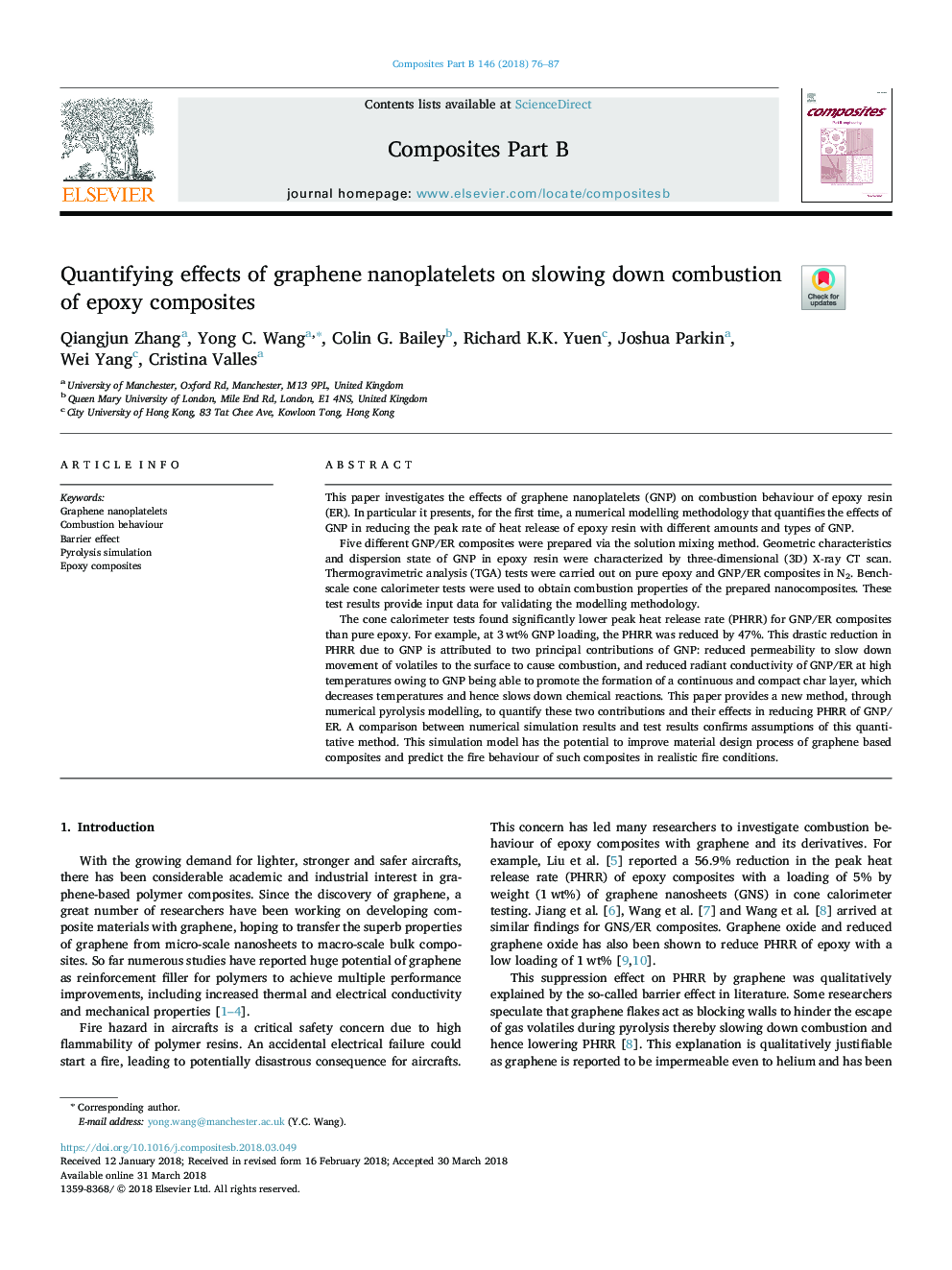| Article ID | Journal | Published Year | Pages | File Type |
|---|---|---|---|---|
| 7211973 | Composites Part B: Engineering | 2018 | 12 Pages |
Abstract
The cone calorimeter tests found significantly lower peak heat release rate (PHRR) for GNP/ER composites than pure epoxy. For example, at 3â¯wt% GNP loading, the PHRR was reduced by 47%. This drastic reduction in PHRR due to GNP is attributed to two principal contributions of GNP: reduced permeability to slow down movement of volatiles to the surface to cause combustion, and reduced radiant conductivity of GNP/ER at high temperatures owing to GNP being able to promote the formation of a continuous and compact char layer, which decreases temperatures and hence slows down chemical reactions. This paper provides a new method, through numerical pyrolysis modelling, to quantify these two contributions and their effects in reducing PHRR of GNP/ER. A comparison between numerical simulation results and test results confirms assumptions of this quantitative method. This simulation model has the potential to improve material design process of graphene based composites and predict the fire behaviour of such composites in realistic fire conditions.
Related Topics
Physical Sciences and Engineering
Engineering
Engineering (General)
Authors
Qiangjun Zhang, Yong C. Wang, Colin G. Bailey, Richard K.K. Yuen, Joshua Parkin, Wei Yang, Cristina Valles,
